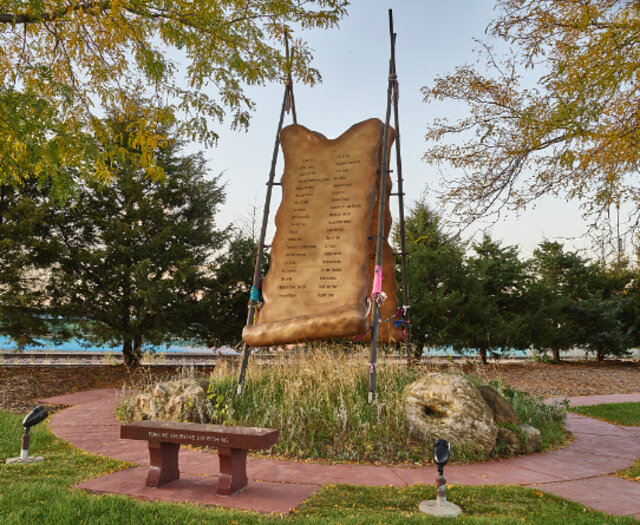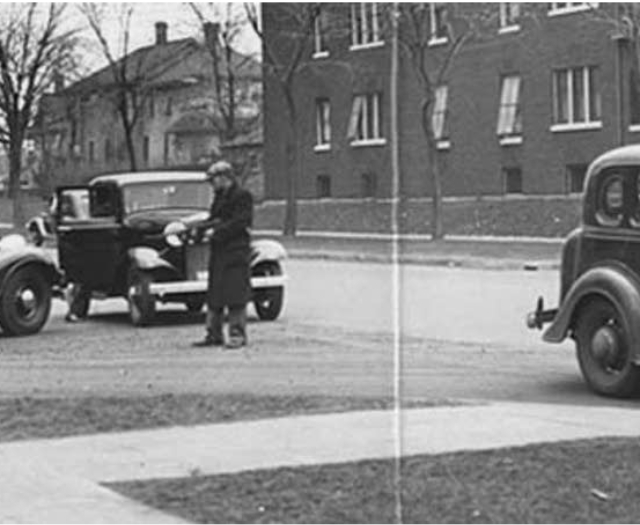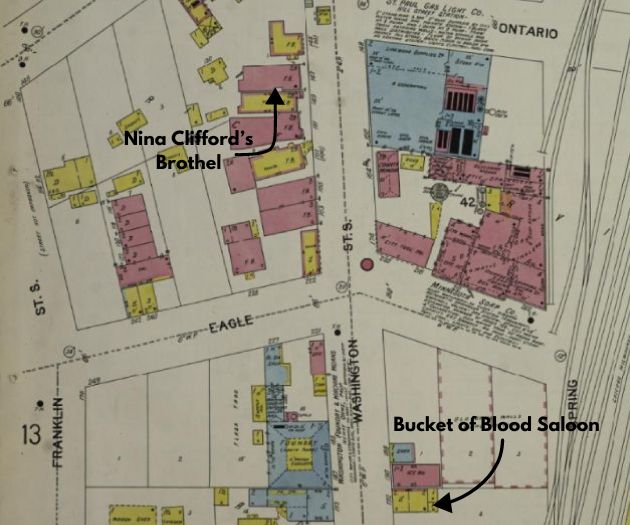Shootout at Lincoln Court Apartments (March 31, 1934)

Lincoln Court Apartments, a charming brownstone complex located at 93 – 95 South Lexington Parkway, was once the setting of an epic gun battle between police, federal agents, and gangsters, including John Dillinger.
A seemingly minor police encounter with quiet residents of apartment 303 on March 31, 1934, escalated into another in a series of grand battles between law enforcement and the criminal underworld. A call to the authorities from Daisy S. Coffey, the building’s owner, drew out America’s “Public Enemy №1” and pushed the gangster menace back into the front page of newspapers nationwide.
Less than two weeks earlier, on March 19, Dillinger and his girlfriend Billie Frechette had rented apartment 303 for $60 per month. They used the alias of Mr. and Mrs. Carl Hellman. Their intense need for secrecy immediately aroused the suspicions of the owner. The couple always came in and out through the rear door of the building and kept the shades in their apartment closed. The only activity from their room came at night.
On March 30, Coffey spoke with the FBI, expressing concerns about the Hellmans.
On a cold Saturday morning at around 10:15 AM, FBI Agent Rufus Coulter and Saint Paul Detective Henry Cummings knocked on the door of apartment 303 while FBI Agent Rosser Nalls waited outside of the building. When Frechette opened the door, the men asked to speak with Mr. Hellman. She initially asked, “Who?” Frechette had forgotten their alias at a most inopportune time. She quickly recovered, telling the officers he wasn’t home. They asked if they could come in and talk with her. Frechette nervously said she’d have to get dressed first and quickly shut the door. She then woke up Dillinger.
While the two officers awaited her return, a man walked up the stairs and toward the apartment. Noticing law enforcement, he continued toward the stairs leading out of the building via the front door. Agent Coulter followed, asking him what he was doing there. The man, reputed gangster Homer Van Meter, said he was a soap salesman. The agent asked him about samples, and Van Meter said he was getting them from his car, a green Ford Coupe parked nearby.
Coulter continued behind Van Meter, following him into the building’s lobby. Realizing he wouldn’t get away, the gangster swung around and started shooting. He tried to escape, but Agent Nails, stationed outside, fired at him when he exited. Van Meter was forced to re-enter. An incredible gun battle ensued, with later reports that too many shots were fired to count them all accurately.
Hearing gunfire, Dillinger cracked open his apartment door, pointed out a Thompson sub-machine gun, and sprayed the third-floor hallway with bullets. The hail of gunfire forced the officers to take cover, allowing the gangster and his girlfriend to leave through the building’s unguarded rear entrance. During the shooting, Dillinger was hit in the upper left calf, making his the melee’s only injury.
While Dillinger covered her, Frechette ran to a nearby garage and grabbed the couple’s brand-new black Hudson sedan. He hopped in, and the two sped off. When they were safely beyond the reach of the authorities, they slowed down to not raise suspicion.
FBI Agent Nails, realizing the man who had walked into the building earlier was the gunman, had shot holes into his car’s tires so he couldn’t escape. Noticing that his car was inoperable during his escape, Van Meter hijacked a garbage collector’s horse, replaced his fedora with a hauler’s cap, and galloped away.
The three met later at gangster Eddie Green’s apartment on 3300 Fremont Avenue South in Minneapolis. Dillinger soon after had his leg treated at the Minneapolis office of Dr. Clayton May before recuperating for a few days.
He and Frechette then left Minnesota. They went to visit Dillinger’s father in Mooresville, Indiana.
In early 1934, a Ramsey County grand jury looked into allegations the city of Saint Paul’s police force had allowed the city to become a haven for criminals. On March 31, the same day the Lincoln Court Apartments shooting occurred, the grand jury released its findings, stating the city did not have a gangster problem.
The St. Paul Daily News newspaper and its editor, Howard Kahn, already at odds with city officials over their less-than-adequate response to the gangster problem, wasted little time expressing outrage. They lamented the grand jury’s decision, noting its findings were released on the same day officers were engaged in a shootout with criminals at the Lincoln Court Apartments.
It was another traumatic incident in a long series of violent crimes, and the city’s citizens had seen enough. Public sentiment, which at one time had once been mostly positive toward the gangsters, shifted. People finally believed the city’s violent criminal element needed to be removed.
This work is licensed under Creative Commons BY-NC 4.0.
Bibliography
-
Dillinger: The Untold Story. Bloomington: Indiana University Press, 2004.
-
"John Dillinger." Murderpedia, the Encyclopedia of Murderers. LINK.
-
"Lincoln Court Apartments - St. Paul - Historic Twin Cities." Historic Twin Cities. Last modified February 18, 2020. LINK.
-
John Dillinger Slept Here: A Crooks' Tour of Crime and Corruption in St. Paul, 1920-1936. Minnesota, 1995.
-
Top Cases of The FBI. RJ PARKER PUBLISHING, INC., 2012.
 Minnesota Then
Minnesota Then


